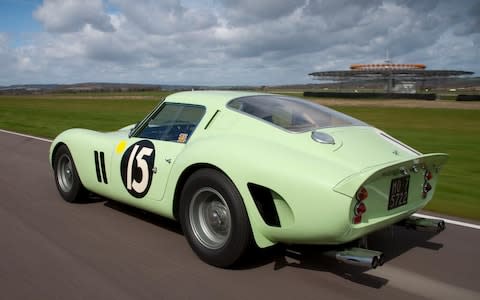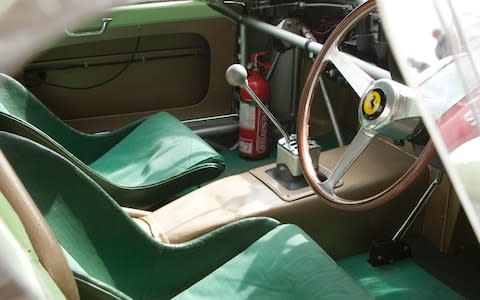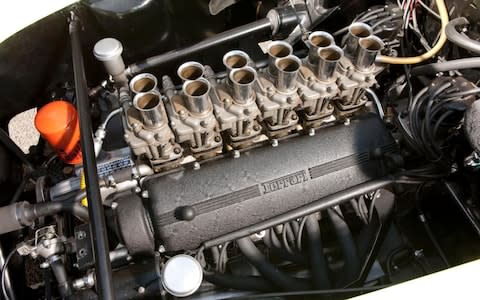What’s it like to drive a Ferrari 250 GTO at Goodwood?

Never meet your heroes, or so we are told. Their legends are built on the sides that point out to the world, not those that point into their hearts. But if you were offered a drive in a Ferrari 250 GTO, especially at Goodwood, where it won races, would you turn it down? Me neither.
Long before RM Sotheby’s smashed every automobile auction record by selling a 1962 250 GTO for $48.4 million (£39.01 million - including fees) at its Monterey sale in California on August 25 last year, I would contend that particular combination of numbers and letters were more likely than any other to set fluttering the hearts of car enthusiasts around the world, and working out why is easier than you might think.
For any car to become a classic it must first select as many qualities as it can from a menu of attributes. Being beautiful is a fine place to start and if it can be wonderful to drive too, so much the better especially if it can be used on both road and track.
The whole game moves on to a different level if the car is also very rare and up another notch or two if it can contrive to be interesting or somehow important. Beyond that the only way to build its legend still further is to be in possession of both a successful competition history and a revered badge on its elegant snout.
Simply put, no car in history ever put more ticks in more boxes than the GTO.

It was waiting for me at Goodwood, in the exact same paddock it had once waited for Stirling Moss in 1962, his career-ending accident in the previous race denying us the chance of seeing the greatest driver of that generation in its greatest sports car. That very car – this very car – still won the RAC Tourist Trophy race that year, though with Innes Ireland at its wood-rimmed wheel.
A lot of me didn't want to slip into its thin metal bucket seat, fire up that majestic motor, hook the spindly gear lever across and back into first, lift the racing clutch and head on to the track. I was entirely uninsured but bizarrely that's not what concerned me most. What if it wasn't actually that good to drive? What if the ocean of ink that has been expended down the decades eulogising Ferrari's allegedly greatest hit turned out to be nothing more than a tidal wave of hubris and hyperbole? But someone is waving me forward; the time for such reflections has passed.
Twelve cylinders are more than you need to make a decent 3.0-litre engine (Ferrari designed them with as few as four) unless you're looking for a soundtrack for the greatest experience of your life: then they're essential, as are the six twin-choke Weber carburettors that feed them. Together they make a noise so fascinating and multi-faceted it's easy to see why those who raced them talked of orchestras under the bonnet.

At idle it's an impossibly complex blend of growls, clatters, bangs and whizzes, but as the revs rise inexorably towards the 8,000rpm red line, so they unite into one shrieking voice filling every space in the cabin and between your ears with shattering, inimitable, mesmerising music.
This is encouraging. As is the fact that it is properly fast: all 39 GTOs that were built are now nearing their 60th birthdays and by modern standards their 300bhp motors might not sound that strong. But in less than a tonne of car that still allows for a similar power to weight ratio to a brand new Porsche 911 GT3. Add in that noise and a gearchange that can only be described as perfect and you're not going to get bored on the straights.
But it was they way the car handled that made the drivers of the day rave about the GTO. This has always seemed odd because, even by 1962 standards, the GTO was pretty primitive technologically. It didn't have a monocoque chassis like its Jaguar E-type rival while its leaf-sprung rear axle owed more to a horse and cart than the most modern cars of its era. There was nothing clever about it at all except the cleverest thing of all: it worked.

The beauty of a pot lies not in the clay but the potter's skill, a fact well illustrated by the GTO which takes its unprepossessing raw materials and moulds them into driving experience of unforgettable drama, humbling magnificence and delicate detail. Even cars designed to race tend to decide for you how a corner is to be tackled, but not the GTO. When it turns in, instead of understeering or oversteering because either the front or back has lost grip, it just steers with all four wheels sliding gently across the surface of the track, awaiting further instruction.
These are provided not by hand, but by your right foot which by little more than the pressure of your toes can adjust the GTO's attitude with almost millimetric precision. It sounds tricky but it is a natural state for the GTO and a condition of automotive nirvana for the driver. And in that moment you'll know why greats such as Graham Hill, John Surtees and Innes Ireland came to love this car.
But I am none of the above, nor anything like them, and after just a few more laps it is time to give it back rather than expose it to needless risk. If driving a GTO is the greatest thing even the luckiest motoring journalist might reasonably expect to do in his career, then crashing one would qualify with even greater conviction as the worst.
What did I learn? Simply that there's another reason, in addition to all those named above, why the Ferrari 250 GTO is the most valuable car ever to be sold at auction. Yes it's a beautiful, fine-driving, rare, important, interesting and successful Ferrari, but it's more even than that. It is also one of those mythical cars that somehow contrives to be even better than the sum of its parts, better indeed you suspect even than its creators ever imagined or dreamed it might be.
It is, in short, the greatest road racing car ever produced by the greatest sports car manufacturer there is. Under such circumstances, its value doesn't seem that surprising at all.
For tips and advice, visit our Advice section, or sign up to our newsletter here
To talk all things motoring with the Telegraph Cars team join the Telegraph Motoring Club Facebook group here

 Yahoo News
Yahoo News 
